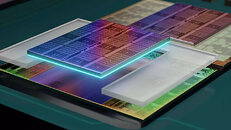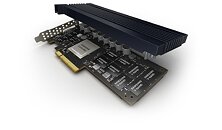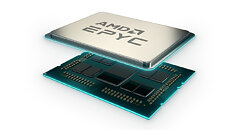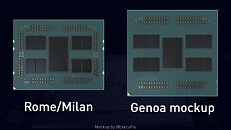
AMD Launches 4th Gen EPYC "Genoa" Zen 4 Server Processors: 100% Performance Uplift for 50% More Cores
AMD at a special media event titled "together we advance_data centers," formally launched its 4th generation EPYC "Genoa" server processors based on the "Zen 4" microarchitecture. These processors debut an all new platform, with modern I/O connectivity that includes PCI-Express Gen 5, CXL, and DDR5 memory. The processors come in CPU core-counts of up to 96-core/192-thread. There are as many as 18 processor SKUs, differentiated not just in CPU core-counts, but also the way the the cores are spread across the up to 12 "Zen 4" chiplets (CCDs). Each chiplet features up to 8 "Zen 4" CPU cores, depending on the model; up to 32 MB of L3 cache, and is built on the 5 nm EUV process at TSMC. The CCDs talk to a centralized server I/O die (sIOD), which is built on the 6 nm process.
The processors AMD is launching today are the EPYC "Genoa" series, targeting general purpose servers, although they can be deployed in large cloud data-centers, too. To large-scale cloud providers such as AWS, Azure, and Google Cloud, AMD is readying a different class of processor, codenamed "Bergamo," which is plans to launch later. In 2023, the company will launch the "Genoa-X" line of processor for technical-compute and HPC applications, which benefit from large on-die caches, as they feature the 3D Vertical Cache technology. There will also be "Siena," a class of EPYC processors targeting the telecom and edge-computing markets, which could see an integration of more Xilinx IP.
The processors AMD is launching today are the EPYC "Genoa" series, targeting general purpose servers, although they can be deployed in large cloud data-centers, too. To large-scale cloud providers such as AWS, Azure, and Google Cloud, AMD is readying a different class of processor, codenamed "Bergamo," which is plans to launch later. In 2023, the company will launch the "Genoa-X" line of processor for technical-compute and HPC applications, which benefit from large on-die caches, as they feature the 3D Vertical Cache technology. There will also be "Siena," a class of EPYC processors targeting the telecom and edge-computing markets, which could see an integration of more Xilinx IP.









































